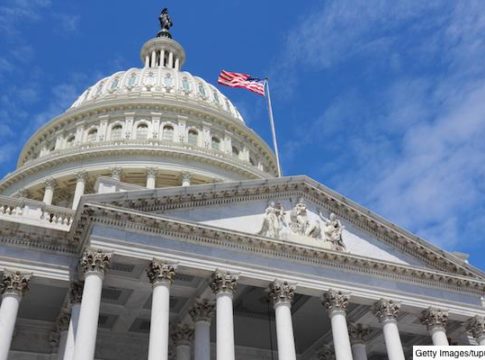If you’re a governor, legislator, budget director, or other state official, you don’t need to be told that education spending cuts are coming. After years of non-stop increases—national K-12 per-pupil spending is up by one-third in inflation-adjusted dollars since 1995—our schools now face near-certain repeated annual budget cuts for the first time since the Great Depression. In some states and districts, reductions will be dramatic—10 percent or even higher. And these new revenue-trend levels are likely to be semi-permanent, what with increased pressure on the public purse from the retirement of Baby Boomers, Medicaid and Medicare costs, debt payments, and other demands.
The challenge for education policymakers is not only to cut carefully so as not to harm student learning, but better yet, to transform these fiscal woes into reform opportunities: to cut smart and thereby help our schools and students emerge stronger than ever. Last week Fordham released a new policy brief to help state lawmakers do exactly that.
The first step for state officials is to recognize that they don’t actually control the bulk of school budgets; districts do. It will be local school boards, superintendents and their staffs, as well as charter schools, intermediate agencies, and other sub-state consumers of education dollars that will decide, at the end of the day, what gets axed or repurposed.
Do they simply lay off all the newest teachers? Get rid of art and music classes? Charge fees for extra-curricular activities, or out-of-zone busing? Or do they think big and restructure teacher compensation, rethink personnel assignments, exit ineffective staff, embrace more efficient delivery systems, push for union concessions around health care-benefits and pensions, and apply innovation to reduce reliance on some personnel?
Local leaders will decide. Yet state lawmakers are far from powerless. They create the frameworks within which these choices get made. Funding formulas and myriad state laws and regulations have enormous impact on the spending decisions of districts and schools. In some states, for example, policies are on the books that require extra pay for teachers who earn a master’s degree. Other states mandate the number of sick days districts must offer their employees, tying the hands of local leaders and driving up costs. The worst case scenario is for states to make across-the-board cuts to their education formulae while leaving all manner of harmful laws, regulations, mandates, obsolete programs, and practices in place.
For instance:
- If reformers want local districts to consider new approaches to teacher pay—e.g., approaches that don’t rely on seniority and raises tied to mostly meaningless master’s degrees—they probably have to make changes at the state level. In Ohio and sixteen other states, the law requires districts to adopt salary schedules with “steps and lanes” based predominantly on years of service and college-credit-based credentials.
- If reformers want districts to stop the nonsensical practice of “last hired, first fired,” which peels off the newest and most energized (and least expensive) teachers and other staff, they’d better make sure that their own states don’t mandate it.
- If policymakers think that strategic increases in class size—and some new approaches to instructional delivery, such as adroit use of online learning—make both budgetary and educational sense, they have to ensure that state barriers don’t preclude this.
It was no accident, of course, that such restrictions made it into the state books. For each policy that affects resource allocation, there is a stakeholder group ready to defend it. State policymakers have their work cut out for them. But if they are ready for a rumble, here are fifteen ways they can stretch the school dollar—and knock some counter-productive policies off the books at the same time:
1. End “last hired, first fired” practices.
2. Remove class size mandates.
3. Eliminate mandatory salary schedules.
4. Eliminate state mandates regarding work rules and terms of employment.
5. Remove “seat time” requirements.
6. Merge categorical programs and ease onerous reporting requirements.
7. Create a rigorous teacher evaluation system.
8. Pool health-care benefits.
9. Tackle the fiscal viability of teacher pensions.
10. Move toward weighted student funding.
11. Eliminate excess spending on small schools and small districts.
12. Allocate spending for learning-disabled students as a percent of population.
13. Limit the length of time that students can be identified as English Language Learners.
14. Offer waivers of non-productive state requirements.
15. Create bankruptcy-like loan provisions.
This is an ambitious, politically perilous agenda, to be sure. But it’s also the one approach with the potential of not only protecting the existing quality of schools, but also setting the stage for the kinds of reforms not possible in previous years. In this far-reaching scenario, closing budget gaps also has the effect of unlocking commitments, policies, practices, and habits such that available education dollars can be used differently to better serve students.
Are we up to the challenge?
-Michael J. Petrilli



